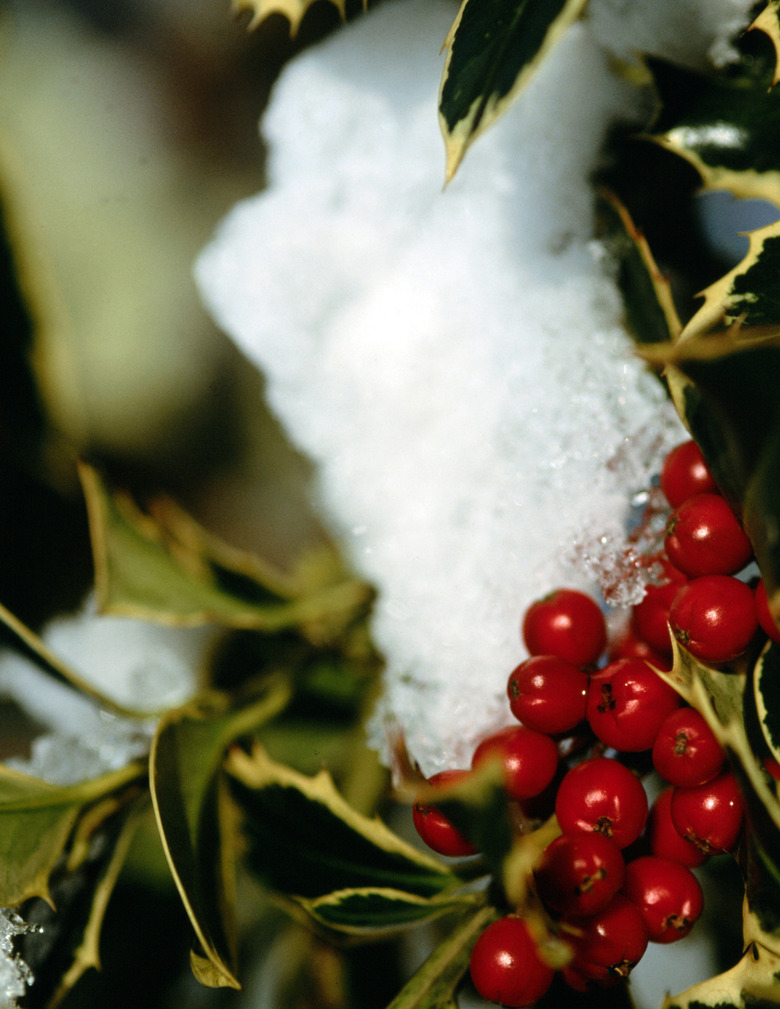Poisonous Small Red Berries On The Lawn
Many weeds, vines and shrubs produce poisonous berries that are toxic to animals and/or humans. Small, red berries may fall to the lawn, putting them in easy reach of children and house pets putting them in danger if the berries are ingested or even touched by exposed skin. Symptoms of toxicity from berries include skin rash, vomiting, nausea and drowsiness.
Step 1
Spindle, Euonymus europaeus, is a small tree or large shrub with reddish-pink berries. Vivid orange seeds are found within the berries. The berries are poisonous when ingested. Jack-in-the-pulpit, Arisaema triphyllum, also grows poison red berries. Jack-in-the-pulpit grows in wooded areas. Pokeweed, Phytolacca, is a tall weed that grows up to 5 feet high. The berries, which resemble grapes, grow in clusters. As they ripen, the berries turn white and green before they become reddish, and eventually purple. When ingested, the berries create stomach pains, headaches and diarrhea. Flowering dogwood trees produce red berries in fall. The berries may be eaten without fear, but when touched they produce an unpleasant skin rash.
Step 2
Step 3
- Spindle, Euonymus europaeus, is a small tree or large shrub with reddish-pink berries.
- The berries may be eaten without fear, but when touched they produce an unpleasant skin rash.
Winter Berries
Step 1
Evergreen holly shrubs produce bright red berries in winter. Even four of these berries, when ingested, may create violent nausea and vomiting, diarrhea and drowsiness. Holly berries are very small and hard in nature, but some animals and children may still attempt to eat the berries if they are within reach.
Spring Berries
Step 1
Daphne, Daphne mexereum, is an evergreen shrub that produces pink flowers in spring which become white or red berries. The berries are toxic when ingested. Ingesting a Daphne berry may produce swelling of the tongue and lips, vomiting, internal bleeding, thirst and weakness. In severe cases, coma may result. The leaves create a minor skin rash when touched that lasts for a few minutes.
Step 2
- Evergreen holly shrubs produce bright red berries in winter.
- The leaves create a minor skin rash when touched that lasts for a few minutes.
Summer Berries
Step 1
Yew, Taxus, is an evergreen shrub that produces soft red berries in summer. Eating just a few of these berries may produce vomiting, stomach pain, dizziness and labored breathing. Chokecherry, Prunus virginiana, reaches up to 30 feet in height. The red berries themselves are not poisonous, but the seeds within the berries are highly toxic and should not be eaten.
